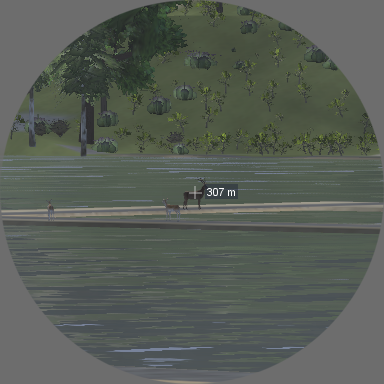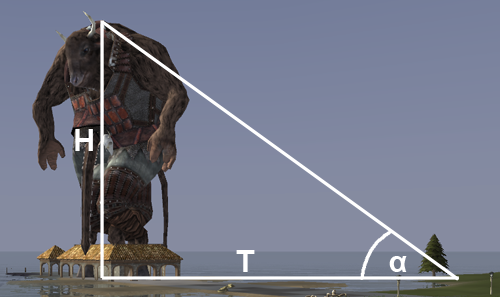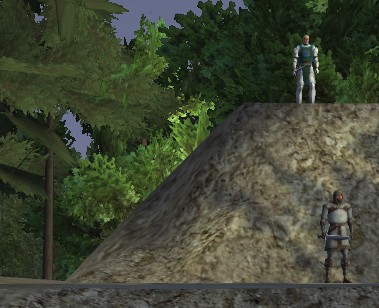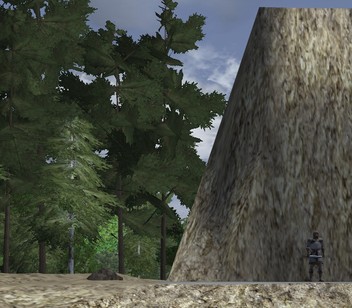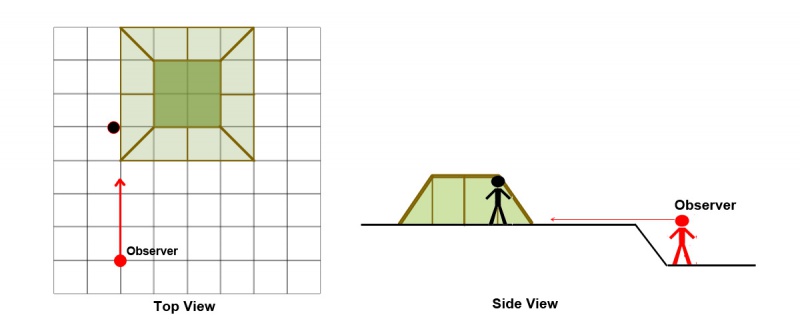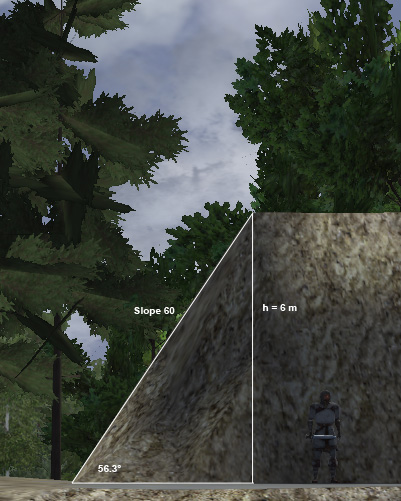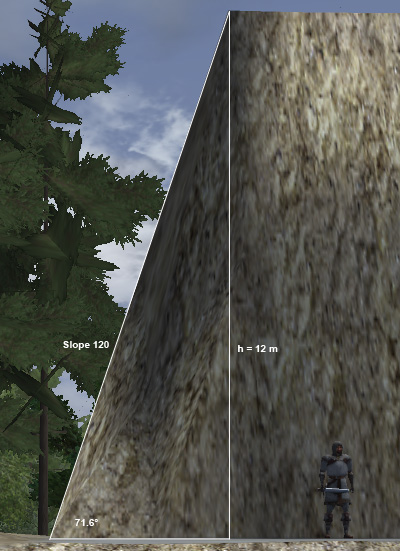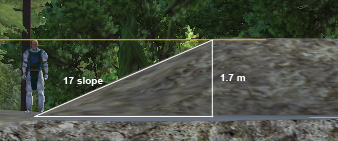Difference between revisions of "Wurm Universe"
(Added a list of Wurm seasons) |
(Added new harvest seasons (Wurm 1.3 update)) |
||
| Line 199: | Line 199: | ||
This is the Wurm calendar, showing days, weeks, starfalls, and the seasons: | This is the Wurm calendar, showing days, weeks, starfalls, and the seasons: | ||
| − | [[File:Wurm Calendar- | + | [[File:Wurm Calendar-v311.png]] |
Revision as of 16:14, 22 November 2016
This is a series of articles on the "physics and astronomy" of the universe of Wurm Online, trying to describe the structure, dynamics and “laws of nature” of our in-game world.
Part 1: Basic Metrics
(Basic dimensions of the Wurm universe: tiles, distances, slopes and heights)
The most basic unit of measurement is defined by the size of a “tile”. Tiles are the equally sized squares that the landscape of Wurm Online is entirely composed of. In the 3D world of Wurm a tile can be either flat or inclined, so that one or more of its corners can be higher or lower than the others.
In all our calculations we used the following fundamental information, given in the Wurmpedia (http://www.wurmpedia.com/index.php/Tile):
“A tile is a 4 meter by 4 meter square”.
How can we measure distances and heights in Wurm? Originally we tried to use a spyglass, because it displays the distance between the observer and an object pointed to by the crosshairs:
Using a spyglass is sufficient to verify the basic unit of measurement (1 tile = 4m x 4m) and to measure linear distances within a reasonable accuracy. However, when it comes to measuring heights it turned out that a spyglass is not quite accurate enough to yield reliable results. Thus we need to use a more precise method: triangulation! This method uses basic trigonometric functions to determine the height of an object.
To determine the height H of an object, you define a reference point, take a screenshot (as shown in the example) and measure the angle α between the ground and the top of the object, as seen from the reference point. (As we have no means to measure angles in-game, we need to use a graphics program to determine the angle on the screenshot.) Additionally you need to measure the horizontal distance, which you obtain by counting the number of tiles T (remember: one tile corresponds to a distance of 4 meters). You then get the height H by using this formula:
H = T tan α
Here is an example: For a distance of 40 tiles (T=160m) we measure an angle of 14°. Thus, our avatar of Magranon would have a height of:
H = 160m ● tan(14°) = 40m
(Please note that the result has to be rounded, due to the immanent inaccuracy of this method.) Here is a list of heights for some arbitrary objects, just to give some examples:
| Object | Height (m) |
|---|---|
| Player character | 1.7 |
| House wall (1 floor) | 3.0 * |
| Pillar | 5.6 |
| Freedom tower (incl. flag) | 25 |
| Colossus | 34 |
| Deity avatar | 40 |
*) Note: the ground floor of a house has a height of 3.3 m
Finally, talking about measuring heights, we must look at another basic unit of measurement used in the Wurm universe: “dirts”. Whenever we see sloped tiles defining the 3D landscape the elevation of slopes is given in terms of the amount of “dirts dropped”. When terraforming the land you use a shovel to dig or drop dirt - you add or subtract one “unit of dirt” with each action of the shovel.
Using the method of triangulation described above we can find out how these “units of dirt” correspond to metric units. By dropping dirt we make elevated platforms of various heights, thus creating different slopes. We then position an observer in a pit, so that the eye level is slightly above the ground, and take screenshots:
Measuring the angles and using the formula given above, we can triangulate the elevation of the platform:
We obtain the following table (for slopes spanning a single tile):
| Slope | Angle | Elevation (m) |
|---|---|---|
| 10 | 14.0 | 1.0 |
| 20 | 26.6 | 2.0 |
| 30 | 36.9 | 3.0 |
| 40 | 45.0 | 4.0 |
| 50 | 51.3 | 5.0 |
| 60 | 56.3 | 6.0 |
| 70 | 60.3 | 7.0 |
| 80 | 63.4 | 8.0 |
| 90 | 66.0 | 9.0 |
| 100 | 68.2 | 10.0 |
| 150 | 75.1 | 15.0 |
| 200 | 78.7 | 20.0 |
Thus, there is a simple relation between “dirts” and metric units:
1 meter = 10 dirts.
Using this method it is also possible to determine the height of a player character with sufficient accuracy:
Part 2: Time, Date and Calendar
One of the first things we notice when observing the world of Wurm Online is the rapid succession of day and night: a full day-night cycle only lasts 3 hours of our real-world time. Thus, we conclude that the planet Wurm rotates rapidly around its axis: 8 times faster than our Earth. (At this point, we will not discuss the physical implications of this observation, nor will we speculate on the possible reasons for the rapid planetary rotation. This will probably be done in one of the following parts of this series.)
1 real day = 8 Wurm days or: 1 Wurm day = 3 real hours
(By “day” we mean one full planetary rotation, i.e. a complete “day-night cycle”.) Just like in our real world, the rotation of our planet determines how we measure time. In the Wurm universe, instead of saying that a full planetary rotation lasts 3 hours, it was agreed to split the day-night cycle into 24 time units, called “Wurm hours”. (Bear in mind that this is only an arbitrary convention – we could also have agreed on a Wurm rotation having 12 or 30 “Wurm hours”. By choosing the number 24 we just made it easier for us, because now there are as many “Wurm hours” in a “Wurm day” as there are real hours in an Earth day.) Once we made that definition, it is clear that
1 real hour = 8 Wurm hours or: 1 Wurm hour = 0.125 real hours (7.5 real minutes)
It must be noted that this definition has caused a common misunderstanding. On the forums (and even on Wurmpedia) you can sometimes read that “Wurm time passes 8 times faster than real time”. This is not true! Time in the Wurm universe is the same as time in our real world – we only use a unit of time measurement which is 8 times smaller than in real life! (It is the same effect as if you defined a new unit of length – say: “1 Wurm meter”, corresponding to 25 real centimeters - and you would say that a 1-meter ruler has a length of “4 Wurm meters”. This doesn’t make the ruler 4 times longer than it was before!)
You can easily see that Wurm time passes at the same rate as real time by watching the speed indicator below the GUI status window:
Let your character run a while and count the number of tiles you cross in a given length of time. Considering that 1 tile corresponds to 4 meters (see part 1 of this series) you will easily see that the speed indicated in the GUI uses “real time” instead of some kind of pseudo “accelerated time”.
If we take a closer look at the 3 hours defining a full “Wurm day”, we find that Sol (the sun of our planet Wurm) rises at 04:30 (Wurm time) and sets at 19:30 (Wurm time) each day. That’s why the time between about 20:00 and 04:00 is dark (“night”), and the time between 04:00 and 20:00 is bright (“day”).
Now that we have defined the “Wurm day” and the “Wurm hour”, we also observe that the visual appearance of Wurm’s nature changes as time passes. Just like in real life, we experience 4 different seasons, called “winter”, “spring”, “summer”, and “autumn”. These seasons reoccur regularly after 336 Wurm days. Thus we can define the “Wurm year”:
1 Wurm year = 336 Wurm days = 42 real days.
This is a convenient number, because 336 = 7 x 4 x 12, allowing us to split a Wurm year into 12 months (called “starfalls”), each with 4 weeks of 7 days.
1 Wurm year = 12 starfalls
1 starfall = 4 Wurm weeks = 3.5 real days
1 Wurm week = 7 Wurm days = 21 real hours.
The 7 days in a Wurm week are called:
- 1. day: Day of the Ant
- 2. day: Day of Luck
- 3. day: Day of the Wurm
- 4. day: Day of Wrath
- 5. day: Day of Tears
- 6. day: Day of Sleep
- 7. day: Day of Awakening
The 12 starfalls are called:
- 1. starfall: Diamond
- 2. starfall: Saw
- 3. starfall: Digging
- 4. starfall: Leaf
- 5. starfall: Bear
- 6. starfall: Snake
- 7. starfall: White shark
- 8. starfall: Fire
- 9. starfall: Raven
- 10. starfall: Dancer
- 11. starfall: Omen
- 12. starfall: Silence
Like our real world, a Wurm year has 4 seasons:
- Spring (beginning in week 3 of the Diamond Starfall)
- Summer (beginning in week 1 of the Leaf Starfall)
- Autumn (beginning in week 4 of the Raven Starfall)
- Winter (beginning in week 2 of the Silent Starfall).
This is the Wurm calendar, showing days, weeks, starfalls, and the seasons:
